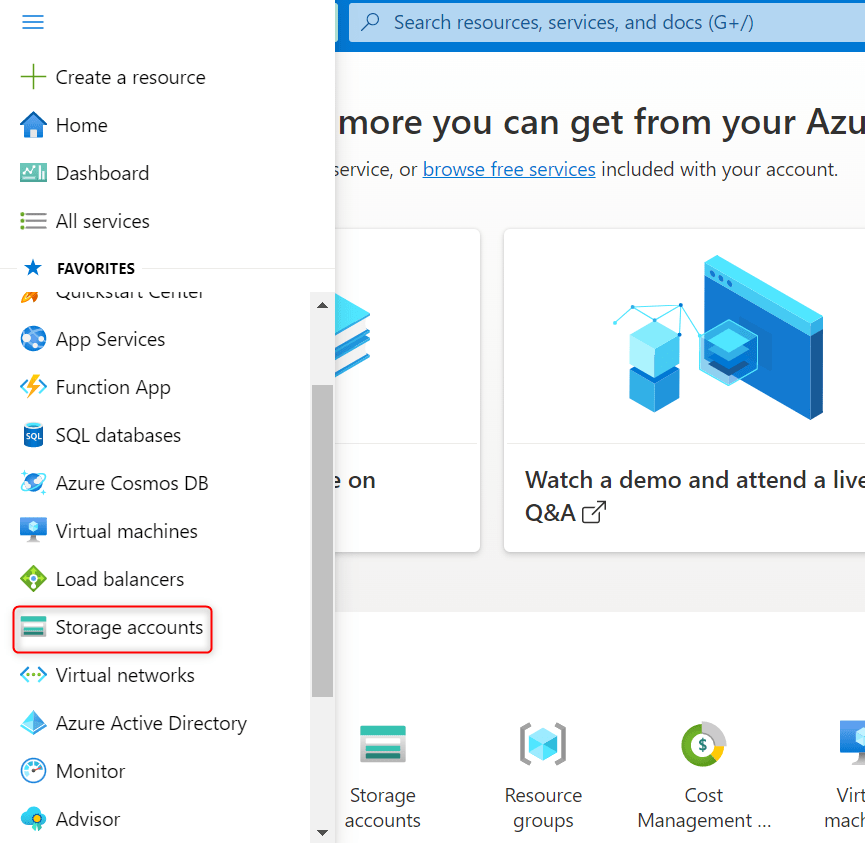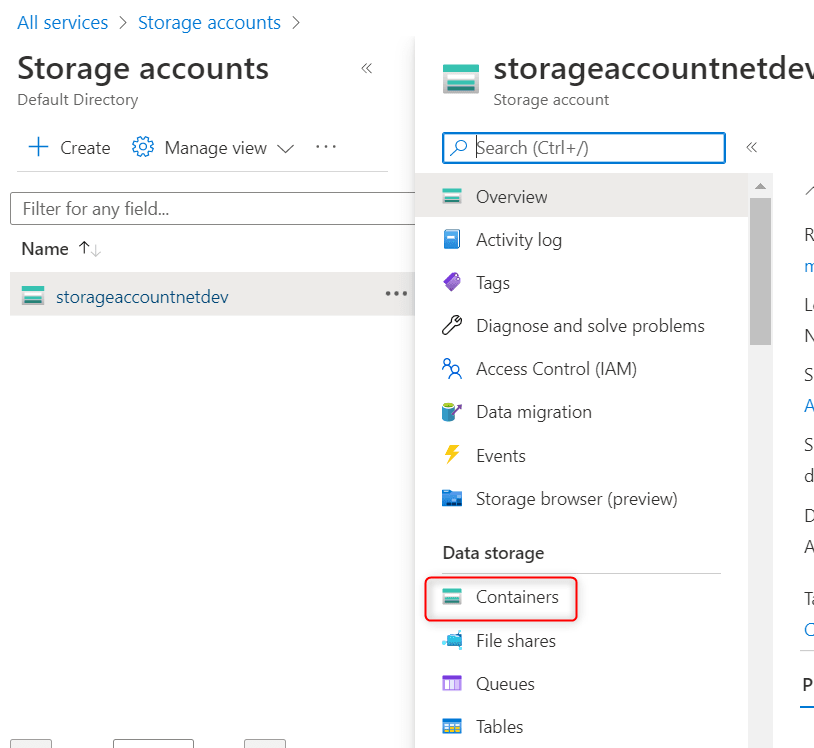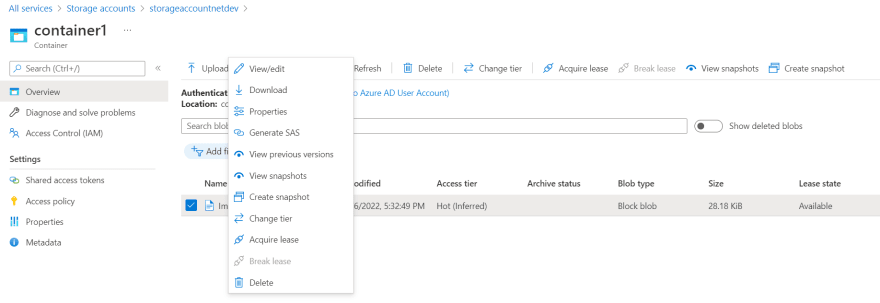Azure storage provides cloud storage that is highly available, secure, durable, and scalable. Azure storage includes Azure Blobs (objects), Azure Data Lake storage Gen2, Azure Files, Azure Queues, and Azure Tables.
In this post, I will be using a Blob storage. Azure Blob storage is Microsoft's object storage solution for the cloud. Blob storage is designed for serving images or documents directly to a browser, storing files for distributed access, streaming video and audio and storing data.
- Creating a storage account
- Sign in to Azure portal
- From the All services blade, search for and select Storage accounts, and then select Create

- On the Basics tab of the Create storage account blade, fill in the following information (replace xxxx in the name of the storage account with letters and digits such that the name is globally unique). Leave the defaults for everything else.


Select Review + Create to review your storage account settings and allow Azure to validate the configuration.
Once validation passes, select Create. Wait for the notification that the account was successfully created.
From the Home page, search for and select Storage accounts and ensure your new storage account is listed

- Working with Blob storage
In here, we will be creating a Blob container and also be uploading a blob fileSelect the name of the new storage account, scroll to the Data storage section in the left menu, and then select Containers

Click + Container and complete the information. When done click Create.



Open a new browser window and search for an image of a flower. Right click on the image and save it to your desktop.
Back in the Portal, click on container1 , and then select Upload.

Browse for the image file you just saved on your desktop. Select it and then select upload.
Click the Advanced arrow, leave the default values but review the available options, and then click Upload.
Note: You can upload as many blobs as you like in this way. New blobs will be listed within the container.
Once the file is uploaded, right-click on the file and notice the options including View/edit, Download, Properties, and Delete.

- Monitor the storage account
- Return to the storage account blade and click Diagnose and solve problems

- Explore some of the most common storage problems
- On the storage account blade, scroll down to the Monitoring section and click Insights. Notice there is information on Failures, Performance, Availability, and Capacity.

Great! We just created a storage account, and also worked with storage blobs.
Note: To avoid additional costs, you can optionally remove this resource group. Search for resource groups, click your resource group, and then select Delete resource group. Verify the name of the resource group and then click Delete.


Top comments (0)